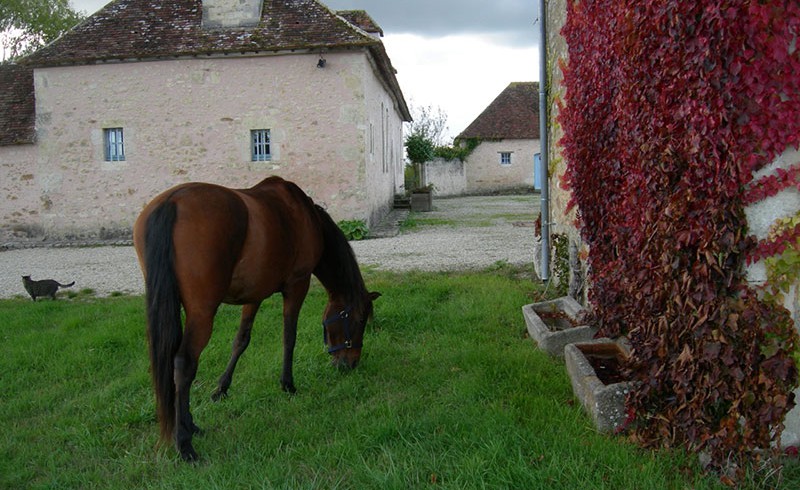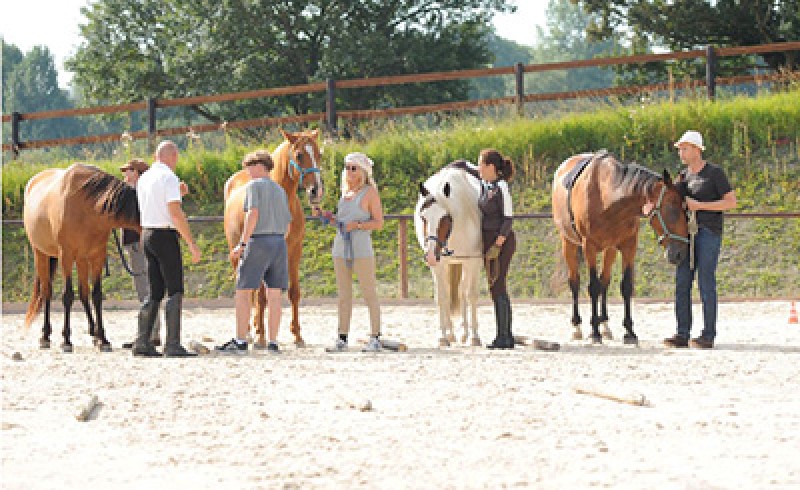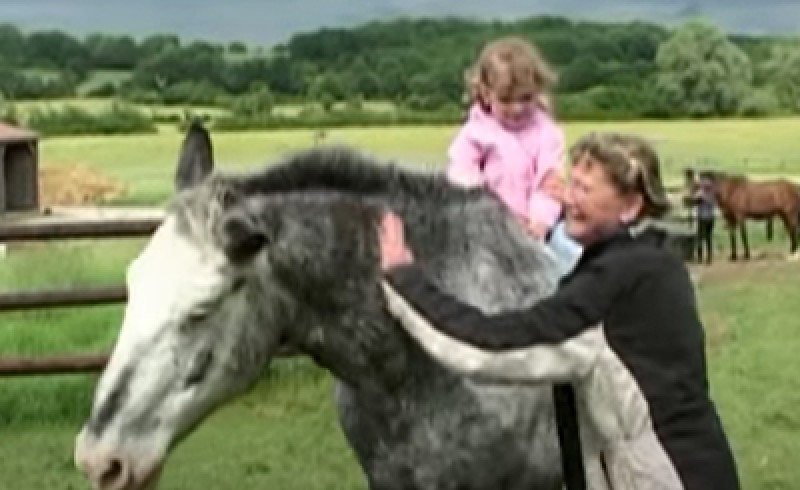Annual Report 2010
(Excerpt: For the complete report please write to Epona-Stiftung für Pferd und Umwelt c/o Mermagen, Kesselstr. 15, 53797 Lohmar)

Lectures, contacts, public relations
After its approval as an independent public foundation by the district government of Cologne on July, 17th of 2009, the fiscal year 2009 was limited to a few months of construction. Accordingly, the year 2010 was still strongly influenced by the desire to bring the goals of the Epona Foundation for horse and environment close to as many people as possible for the first time, to socialize and to design the public appearance of the foundation. The website of the foundation, which can be visited on the Internet at epona-foundation.org, was improved and expanded. Marlies Kamps toured Germany, France, Switzerland and Spain, gave several talks at smaller private events and conducted a number of discussions about concerns and work of the foundation. The well-known German filmmaker Monika Treut (Virgin Machine and many others, see www.hyenafilms.com) could be interested in the Epona horses’ project. She visited us at La Chevrie in Normandy and shot a little film about the animals and our work. On this occasion, the local press (Ouest France) reported extensively on the German foundation.
La Chevrie
The farm “La Chevrie” at Pervenchères in Normandy is prepared horse friendly. Here the little stud farm “Haras de Chênes” is located, which is conducted by Marlies Kamps. There are boxes in a large barn, fences and shelters in the extensive grounds, which are ideal for horses. Here we were able to accommodate our first foundation horse “Kosmos”, a discarded older thoroughbred gelding, who came to us as a gift in 2009. Cosmos could not stay alone, of course. An employee of the stud farm helped us and agreed to provide Timi, her six year-old Paint, who is also a gelding, as a companion to Cosmos. We put the two next to each other in two boxes for two days to get to know each other. It was found that the decision was good. At the first reunion in the pasture, the animals sniffed each other briefly, stated the hierarchy and were inseparable after a few days.

In April 2010, a call for help from the Mont St. Michel reached the Epona Foundation. Anne of the Epona Trust (www.eponatrust.org) asked, if we could move Kham, an old blind horse, from Alençon to her place at the sea. Actually, she was completely overloaded with more than 40 horses, ponies and donkeys, but the current owner of Kham could no longer keep the animal after her divorce. After some discussion we decided to take the 30-year-old Kham. As it turned out Kham had a friend, the 22 year-old Calin, a French trotter with severe osteoarthritis. Nadine, the previous owner was relieved, when we decided to also give Calin a new home. She continued to come for a long time brushing the two, feeding them with treats and explained to us about their characteristics and preferences. The lame Calin showed the blind Kham in the pasture the way to the shelter, where the hay is, and the water tank. Kham repays Calin in tickling him and making him the company of a good friend.
We were convinced that Kosmos, Kham and Calin would soon have more company. In August 2010, we entered into a contractual agreement with the stud farm Haras de Chênes which gives us up to ten places for accommodation of the foundation’s horses, ponies and donkeys. The stud farm is responsible for the provision of all materials necessary for the daily care (food, care, horse-friendly pastures) by qualified personnel. We pay a monthly pension price per animal Powered and carry only additional costs for special transportation, farrier, veterinary, vaccinations, worming and other medical treatments. We are entitled to visit the animals at any time to assure ourselves of their being and also to work with the animals themselves, e.g. to perform physical therapy or psychological support.
Horses help people
In August 2010, we hosted yoga teachers from the U.S., Canada, Holland, Italy and Germany as guests. In a first Equiyoga course we wanted to test whether such workshops could have a future in the Epona Foundation. In the test week all three foundation horses took part. Haras de Chênes gratuitously provided us with the necessary premises. After preparatory asanas, the physical practice of yoga, and meditative exercises to develop sensitivity, awareness and mindfulness, we went into the barn in the afternoon. By combing, brushing and tickling the horses the participants got to know them. Later we went to the corral, where we practiced guiding, directing and stepping backwards with the horses.


As different the three foundation horses are, as different were the results with them: With the thoroughbred stallion Kosmos we had to provide tranquility, security and care. Kham clearly showed how he enjoyed the tickling and brushing, and the points at which he was particularly sensitive to caresses. In working with Calin determination, assertiveness and clarity were demanded, so that the rather slow giant baby with his withers of almost 1.70m moved. After the test week, we agreed: The Epona Foundation was to offer Equiyoga courses in cooperation with experts, because with such courses the foundation could achieve the necessary revenue to pursue their goals. The horses could show how they can help people to recognize and develop their skills.
A cry for help from Morocco
In autumn 2010, we received a call from Morocco. Martine, a German who lives on the Moroccan Atlantic coast in Essaoira, didn’t know what to do. For years she had been looking after some Berber horses that lived in a forest near her house. The herd consisted of about 20 animals, mares, foals and stallions. All animals had owners, who often did not care for their animals for years. Martine provided the animals with straw and water, administered deworming. If the owners needed money or workhorse, they came and took their horse to either sell it on the market or to put it before the cart. The animals which came back mostly looked pathetic, often completely emaciated. Martine tried to find people to buy these horses from their Moroccan owners and bring them to Europe. In October 2010, Marlies Kamps flew to Morocco to see the situation on site, carrying animal drugs and deworming with her. Marlies Kamps found the situation described confirmed. She promised to discuss with the foundation, whether one or two horses could be bought and liberated.

Outlook
In 2011, the foundation purchased two of the Moroccan horses, financed their maintenance in Morocco and thus for the first time was active outside Europe. We discussed a transfer of the horses to France. The number of foundation horses on the farm “La Chevrie” has further increased. Nevertheless, the care and accommodation costs were manageable; like the costs of promotion and management they could be financed with the benefits of the endowment and the first donations. For the time being our current resources were not sufficient for further projects. The oncoming years will therefore be largely determined by raising more donations.